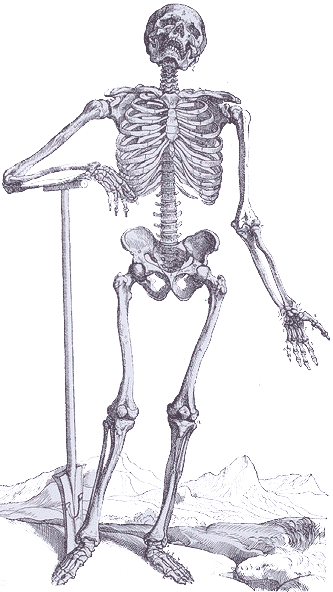
- Outside Link:
- An Approach to the Head Injured Patient by Paul Marik, MD
- Trauma Menu:
- Spine / C-spine
- Orders for the Spine Injured Patient:
Anesthesia in the Spinal Cord Injured Patient:
Fluids in the Head Injured Pt:
Hyperventilation
Glasgow Coma Scale
Head Injury in the Child:
Neuro Exam Menu
Stroke
Seizure 'phylaxis
Urologic Management of the Spinal Cord Injured Patient:
- Timing of Surgery in Orthopaedic Patients with Brain Injury
- Management of Sports Concussion
- Heterotopic Ossification:
- radiographically develops in 3-5% of patients, 1-4 mo (or upto 18 mo) after injury;
- it occurs below the level of the injury, usually at major joints;
- incidence is 40% (1/2 of these are clinically significant);
- after transection of spinal cord, ossification often takes place in soft tissues adjacent to large joints;
- lower extremities are particularly suseptible & most dramatic changes are seen in knee > pelvis > hip;
- characteristic finding is a bilateral accretion of well defined bone which encircle the joints;
- timing of excision:
- in the case of brain injury, hetertopic bone is usually resected once the patients coma has resolved;
- references:
- Excision for the treatment of periarticular ossification of the knee in patients who have a traumatic brain injury.
If thou examinest a man having a gaping wound in his head , penetrating to the bone , (and) smashing his skull;
thou shouldst palpate his wound. Shouldst thou find that smash is in his skull deep (and) sunken under the fingers,
while the swelling which is over it protrudes he discharges blood from both his nostrils (and) both his ears, (and)
he suffers with stiffness in his neck, so that he is unable to look at his two shoulders and his breast.
DIAGNOSIS: Thou shouldst say regarding him : "One having a gaping wound in his head, penetrating to the bone, (and)
smashing his skull ; while he suffers with stiffness in his neck . An ailment not to be treated."
TREATMENT : Thou shalt not bind him , (but) moor (him) at his mooring stakes, until the period of his injury passes by.
- The Edwin Smith Papyrus
- Outside Links:
- GMO Manual
- Iowa Family Practice Handbook
- Merck Manual
The deleterious effects of intraoperative hypotension on outcome in patients with severe head injuries.

